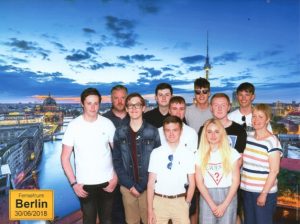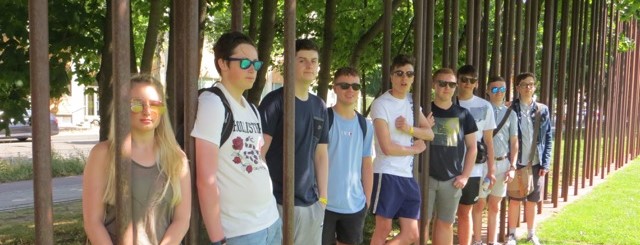by James McCutcheon, Conor O’Neill and Jack Woodward, Year 12
Day one:
· East side gallery, we visited on the night that we arrived and instantly saw how open and transparent the German people were about past events. As well as the way that they have transformed the negativity associated with the Berlin Wall into a colourful and vibrant art piece.
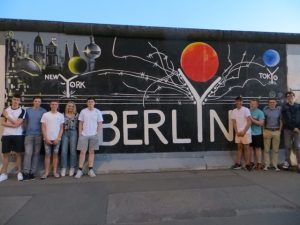
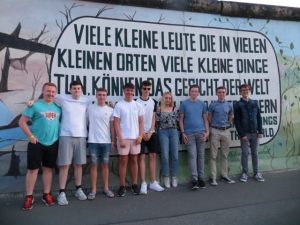
Day two:
· City street tour, took us around the streets of Berlin where we were shocked by the fact that Angela Merkel lived in a regular apartment with one police car as security. Without being pointed out this could easily have been anyone’s home. Also on the tour we visited the site of the bunker where Hitler committed suicide at the end of WW2. This was particularly shocking as there was no memorial or indication that such an historical event had occurred here, it was just a car park.
· Reichstag, we visited the German government building where we had an audio tour around the glass dome. This pointed out key landmarks throughout Berlin as well as giving us an insight into the history of the wider city area.
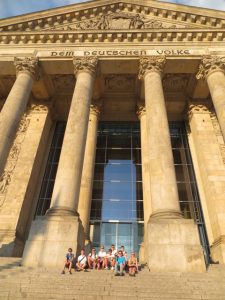
Day three:
· City boat tour, we had an hour long tour of the inner city of Berlin via the Spree river. This showed us the modern German architecture which had been built after the fall of the Berlin Wall as well as the reconstructed older architecture of the Weimar era.
· Hohenschönhausen (Stasi prison), here we had an eye opening two hour tour of the once large Stasi prison. We found out both how prisoners were treated and also the way in which the site was run. We found out the important role that information and data played during the Cold War, especially in one area of the prison where torture methods were employed to extract key information.
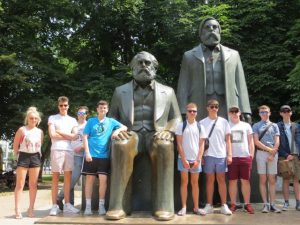
Day four:
· Olympiastadion, here we had a guided tour of the once largest stadium in the world, built for the 1936 Olympic Games held by Nazi Germany. We saw how the building had been modernised for the 2006 World Cup, however the exterior facade has remained the same due to its listed status. It was also one of few buildings to still remain intact by the end of the Second World War.
Day five:
· Topography of terror and Checkpoint Charlie, we looked at a timeline running alongside the Berlin Wall on German history, primarily the rise of the Nazis. This time period explained how Hitler and his national socialists began to eliminate political and racial opposition in 1933. We also visited the site of Checkpoint Charlie, one of the main crossings from East to West Berlin.
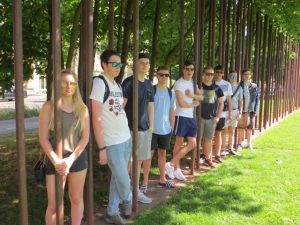
· Fernsehturm, we travelled up the 368m high building, which is the largest in the European Union. It was built in 1969 by the Soviet Union to prove that the East was just as advanced as the capitalist West. We were greeted with panoramic views of the whole of Berlin as well as a nice cool drink!
